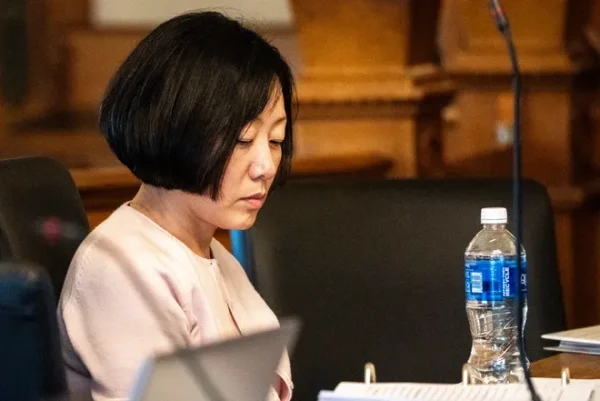One-on-one with cancer
September 11, 2003
Steve Ellens does more than coach men’s basketball at Simpson College; he’s also taking an active role in the fight against leukemia.
In May of 2002, Ellens thought he was going to the doctor for a regular check-up. Instead, he was diagnosed with Chronic Myeloid Leukemia, or CML. The average age of people diagnosed with CML is 53, Ellens was 28. He was young, living in Phoenix, AZ and having the time of his life.
“My first thought was, I’m never going to get married or have children,” said Ellens. “I won’t be able to spend time with Joyce [his then girlfriend and now wife].”
Ellens said the diagnosis really made him focus on his life, especially love and relationships. For that first month, all he could think about was his leukemia.
“It’s like the word leukemia was branded on my brain.” he said
The next step for Ellens was to start dealing with the disease and to get educated on CML.
“As with anything, the more educated you are, the better. It makes things less scary and easier to deal with,” said Ellens.
Patients with CML experience a significant increase in their white blood cell count. Chromosomes number 9 and number 22 switch tails causing white blood cells to continually produce. A normal white blood cell count is between 4,000 and 11,000; when Ellens was diagnosed, his white blood cell count was at 50,000.
Symptoms of CML are weight loss, night sweats and fatigue. When Ellens went in for his checkup, he felt fine.
“Looking back now, I did have some of those symptoms, but they were minimal,” said Ellens.
After the diagnosis, Ellens was put on an anti-leukemia drug, Gleevec. Gleevec is a fairly new drug that was approved by the FDA in May of 2001.
“It has the ability to fight cancer without using chemical or nuclear weapons – chemotherapy and radiation,” said oncologist Andrew Simpson.
Gleevec worked for Ellens, in February 2003, he was in remission. Ellens still continues to take Gleevec today and it is possible that he will never stop taking it.
Ellens credits his remission to Gleevec, but he also made a point to live a smart life and have a positive attitude.
“I concentrated on thinking that I am going to survive this,” said Ellens
Leukemia has not stopped Ellens from living his life to the fullest. He continued to pursue is dream of coaching basketball. In August 2002, he left his job teaching English and coaching high school junior varsity basketball in Arizona to come back to Simpson, where he had played. He is currently the head JV men’s basketball coach and the assistant varsity men’s basketball coach for the Storm.
“I push my student athletes to be their very best and I have to live my life that way too despite CML,” said Ellens. “When I’m coaching, I want to be Coach Ellens, not Coach Ellens who has cancer.”
This year at Simpson, Ellens will be able to impact one of his student athletes more than usual. Freshman basketball player Kris Langgaard is also a leukemia survivor.
“Coach Ellens is one of the reasons I decided to come to Simpson,” said Langgaard. “It excited me that someone would be there who truly understood what I had gone through.”
Langgaard was diagnosed with Acute Myeloid Leukemia, AML, in June of 2002. He had different treatment than Coach Ellens did. He had to go through several series of chemotherapy and then received a bone marrow transplant from his sister senior Katy Langgaard. He reached remission in January of 2003.
“Coach Ellens can relate to me,” said Langgaard. “He’s also keeps me motivated so I will be able to play basketball next year.”
Both Langgaard and Ellens are active in the fight against leukemia. Ellens is on the board of trustees for the Leukemia and Lymphoma Society. He also sponsors a theme house at Simpson who will be putting on a bone marrow drive later this year.
Both will be participating in the Light the Night walk, which is sponsored by the Leukemia and Lymphoma Society. The city of Des Moines is hosting the walk on September 20th at Nolen Plaza. Seventy-five percent of the proceeds raised by the event will go to the Leukemia and Lymphoma Society for research.
Langgaard’s sister has helped raise over $350 for her brother’s team because she thinks that the walk is a good way to fight leukemia.
“We have to start somewhere,” she said. “If nobody does anything, then there will never be a cure.”












